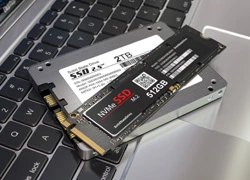SATAFIRM S11 – after all, what happened to the SSD?
You try to turn on the computer, but it cannot start the operating system.
It hangs, indicating that it has no boot device.
Trying to understand what happened, you see that the SSD is not being identified correctly by the BIOS/UEFI. It is being recognized as SATAFIRM S11.
What happened to the SSD?
Basically the SSD controller was unable to correctly load its firmware.
Firmware is built-in software that controls the functioning and performance of these storage devices. SATAFIRM S11 specifically refers to the firmware of a Kingston SSD, but other SSD controllers also fall into this same situation, with the SSD being identified with another name – SanDisk Milpitas SSD, for example, in some SanDisk models.
Firmware can have multiple versions, each with enhancements, bug fixes, or optimizations to improve the performance, stability, or compatibility of storage devices. Companies often release firmware updates to improve functionality or fix known issues.
However, the firmware is stored in NAND Flash memories, and they degrade over time. That is, they lose the ability to retain the stored information by changing the content. This change can be detected through CRC tests.
CRC (Cyclic Redundancy Check) is a data integrity checking method used to ensure that firmware data has not been corrupted or altered.
In firmware, the CRC is a numerical value calculated from firmware data using a specific algorithm. This value is stored along with the firmware. When the firmware is accessed or read, the system recalculates the CRC from the data and compares it to the stored value.
If the values match, it means that the firmware data has not been altered or corrupted. However, if there is a difference between the calculated and stored CRC values, it indicates that there has been a modification or corruption in the firmware data. And then the SSD stops, does not start anymore, entering an error condition.
When an SSD is in this state, a data recovery process is usually required if the information stored on it is important, or firmware reprogramming is required to restore the device to working order. Depending on the SSD manufacturer and model, there may be specific procedures or tools provided by the manufacturer to attempt to correct the situation.
The problem with reprogramming the firmware is that it RESETS all content stored in the NAND Flash memories, losing all stored data and preventing successful data recovery.
And if the NAND Flash memories are already failing, the device is no longer reliable.
So, if your SSD fails and you want to recover your data, look for expert help.







